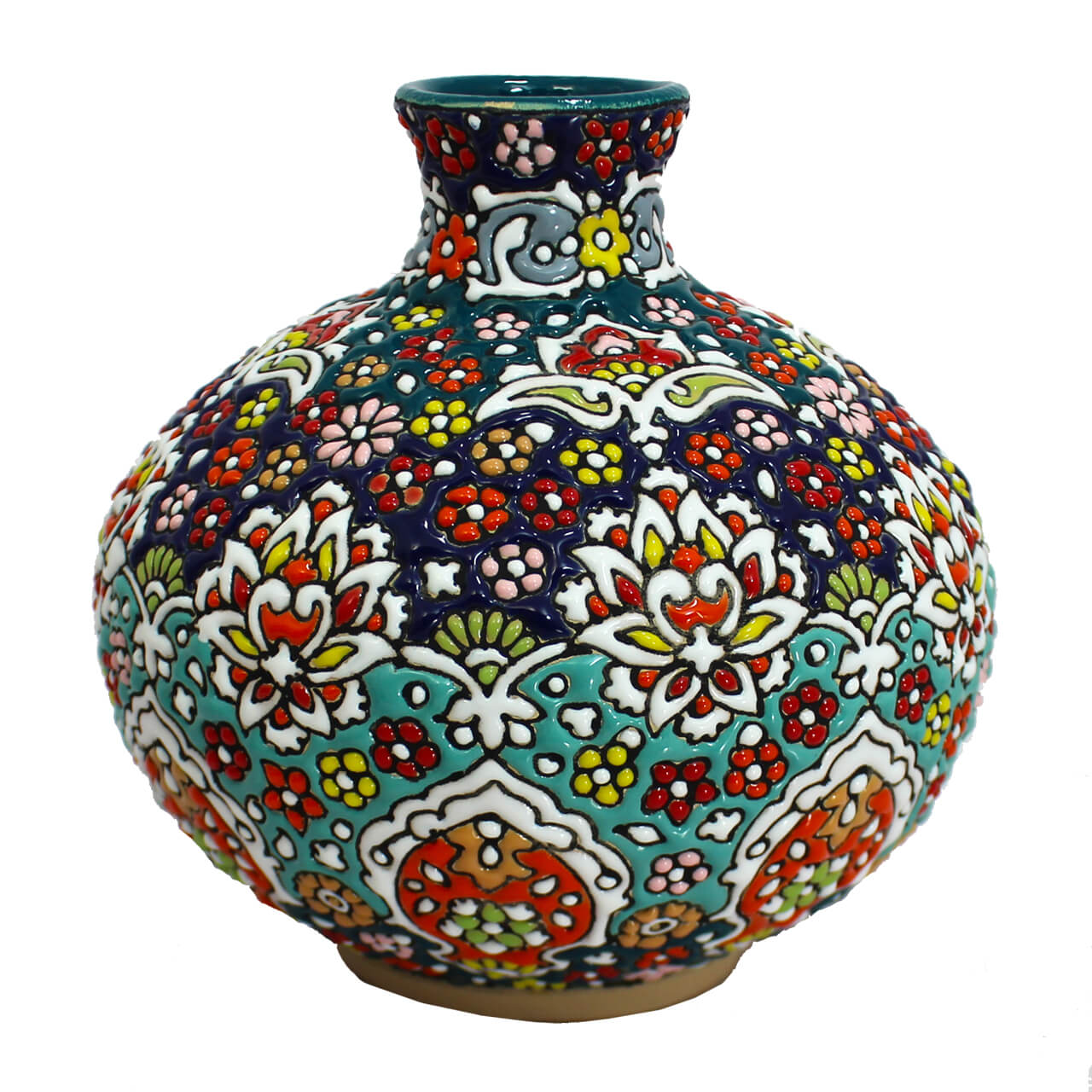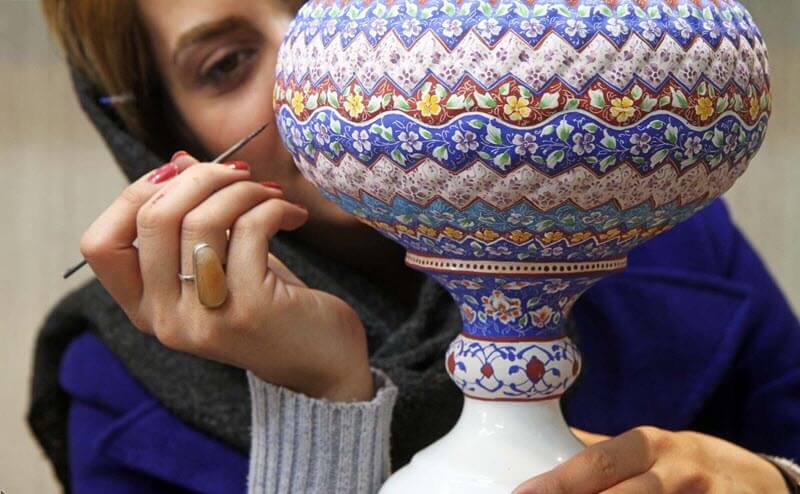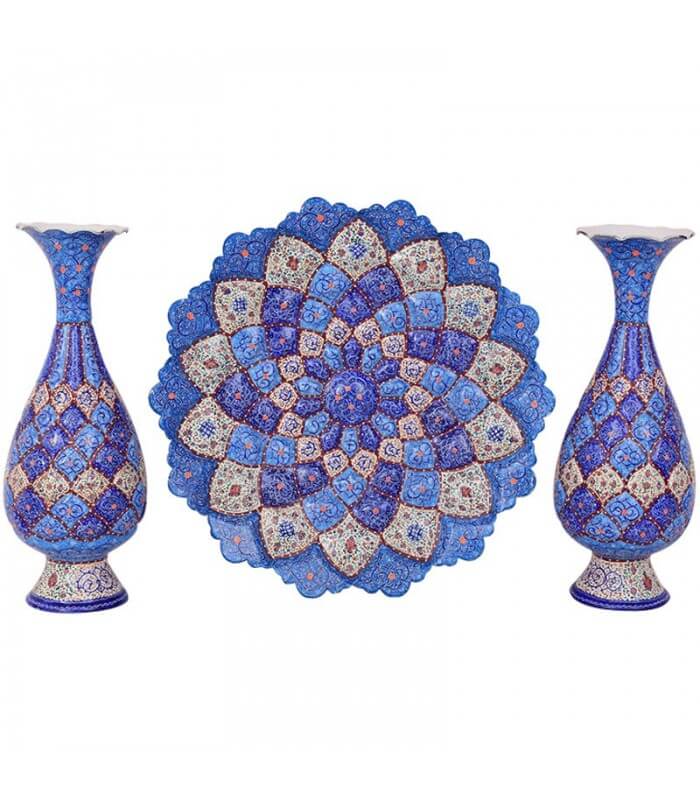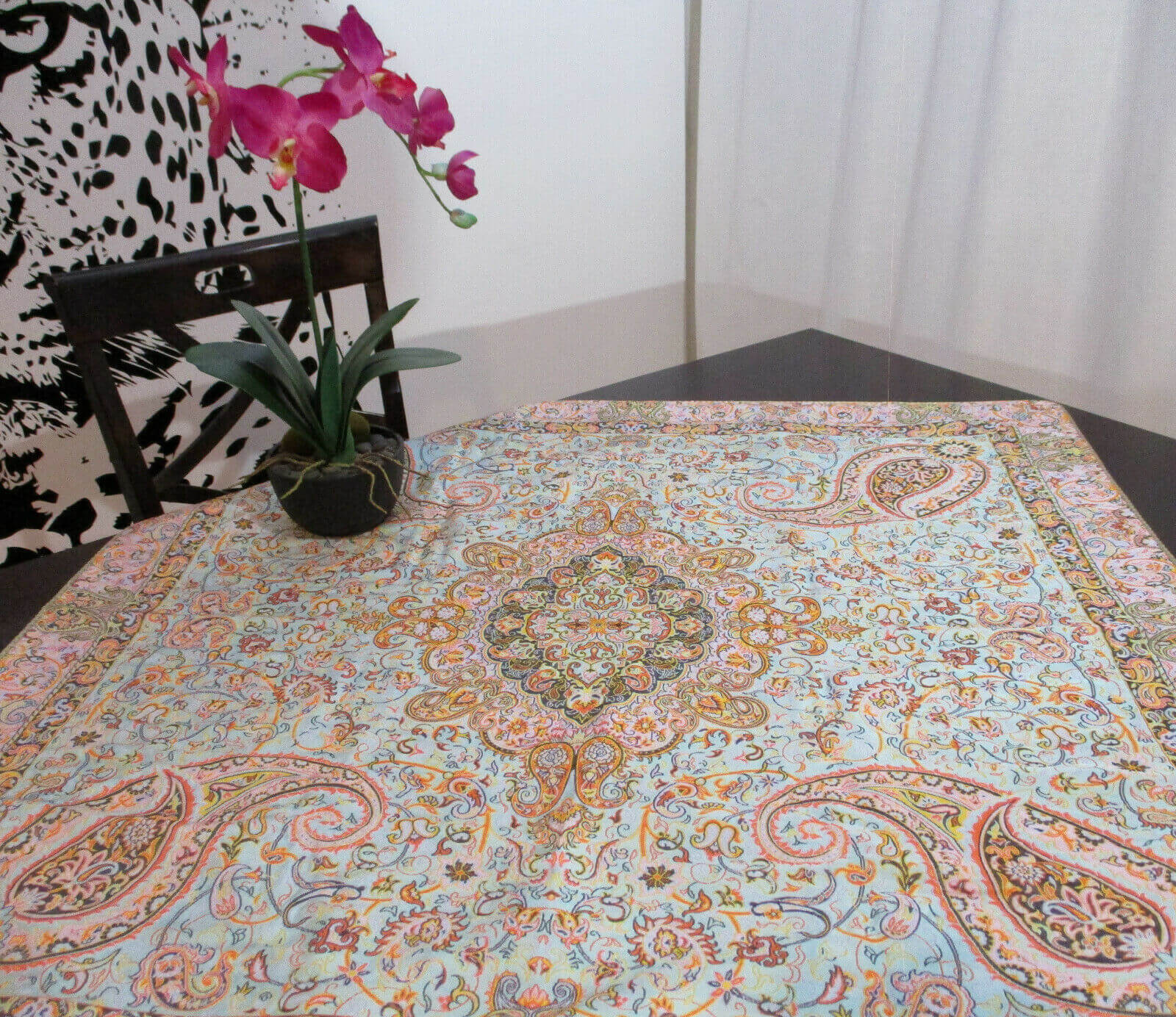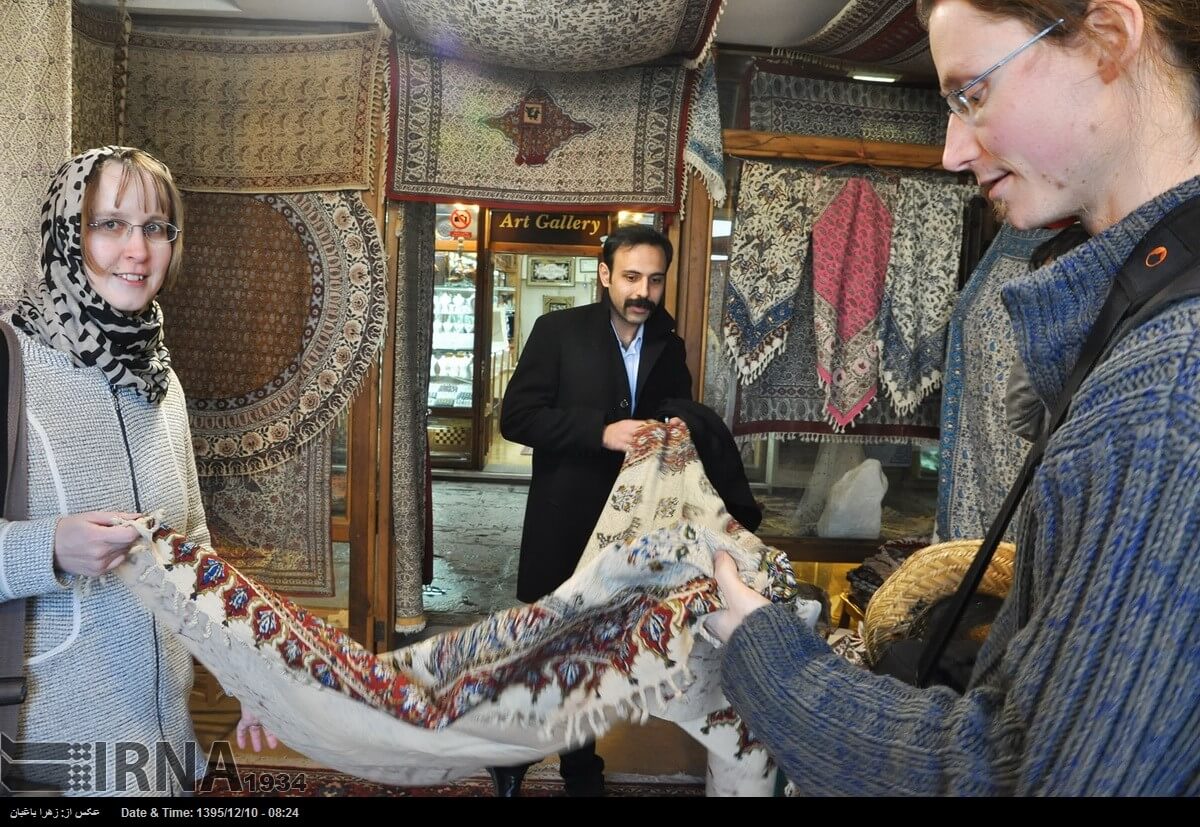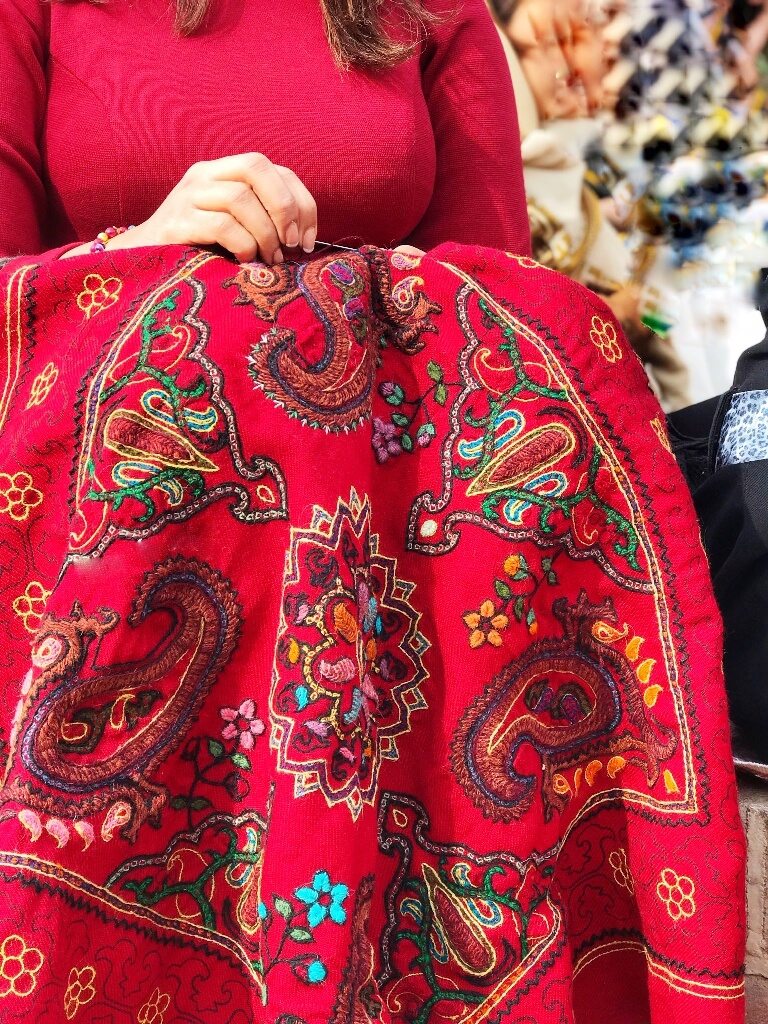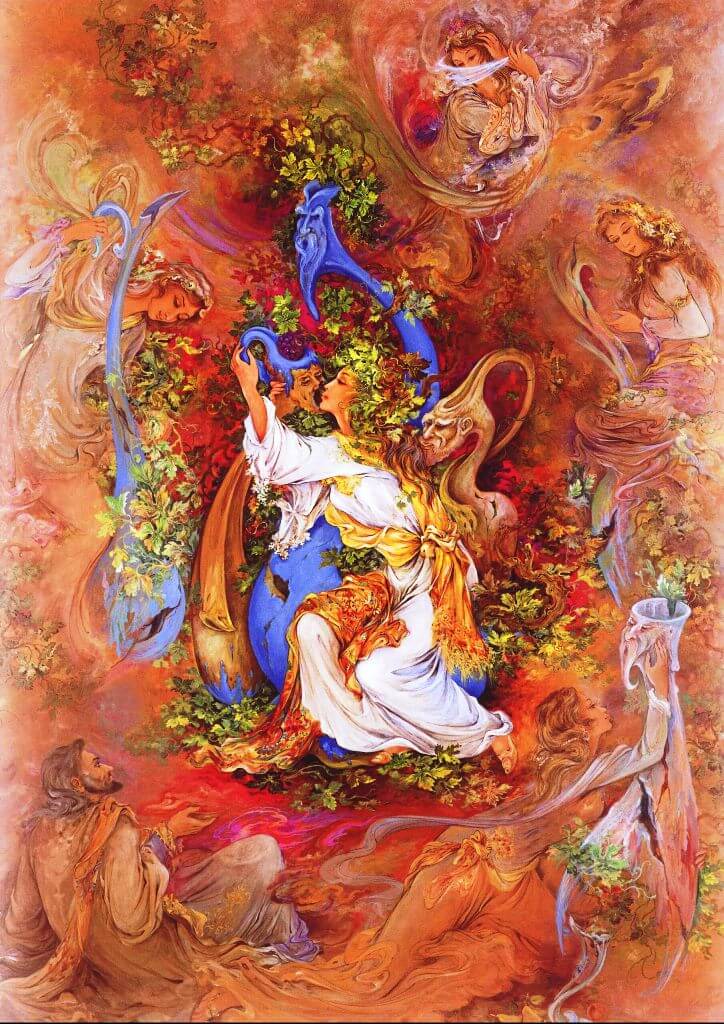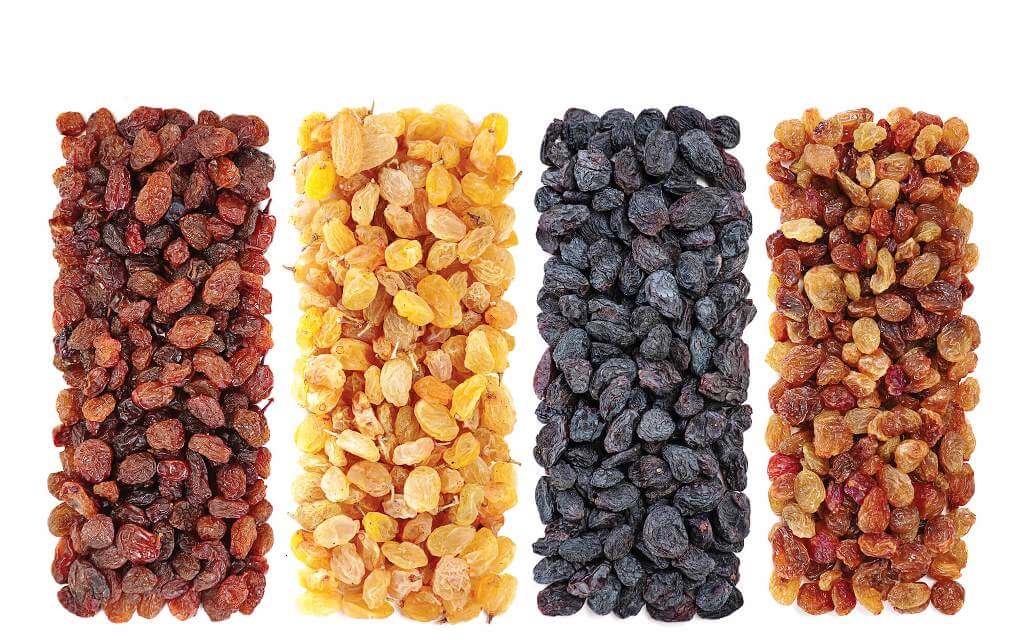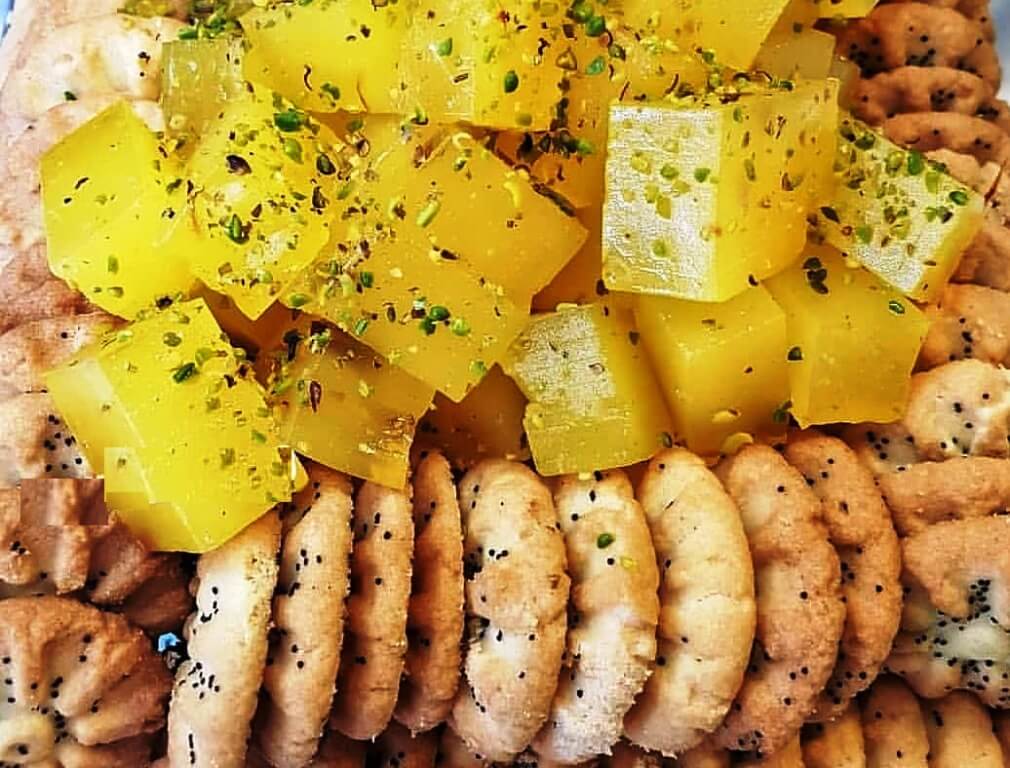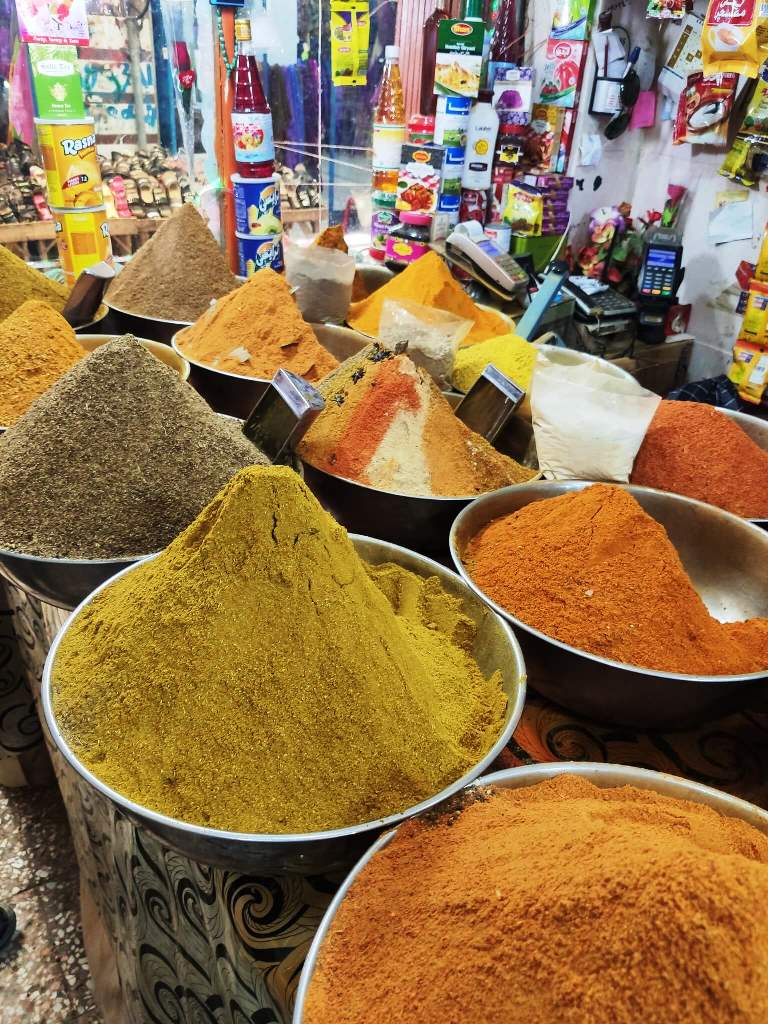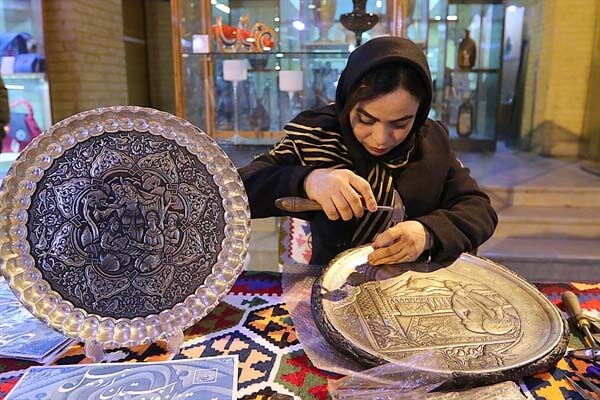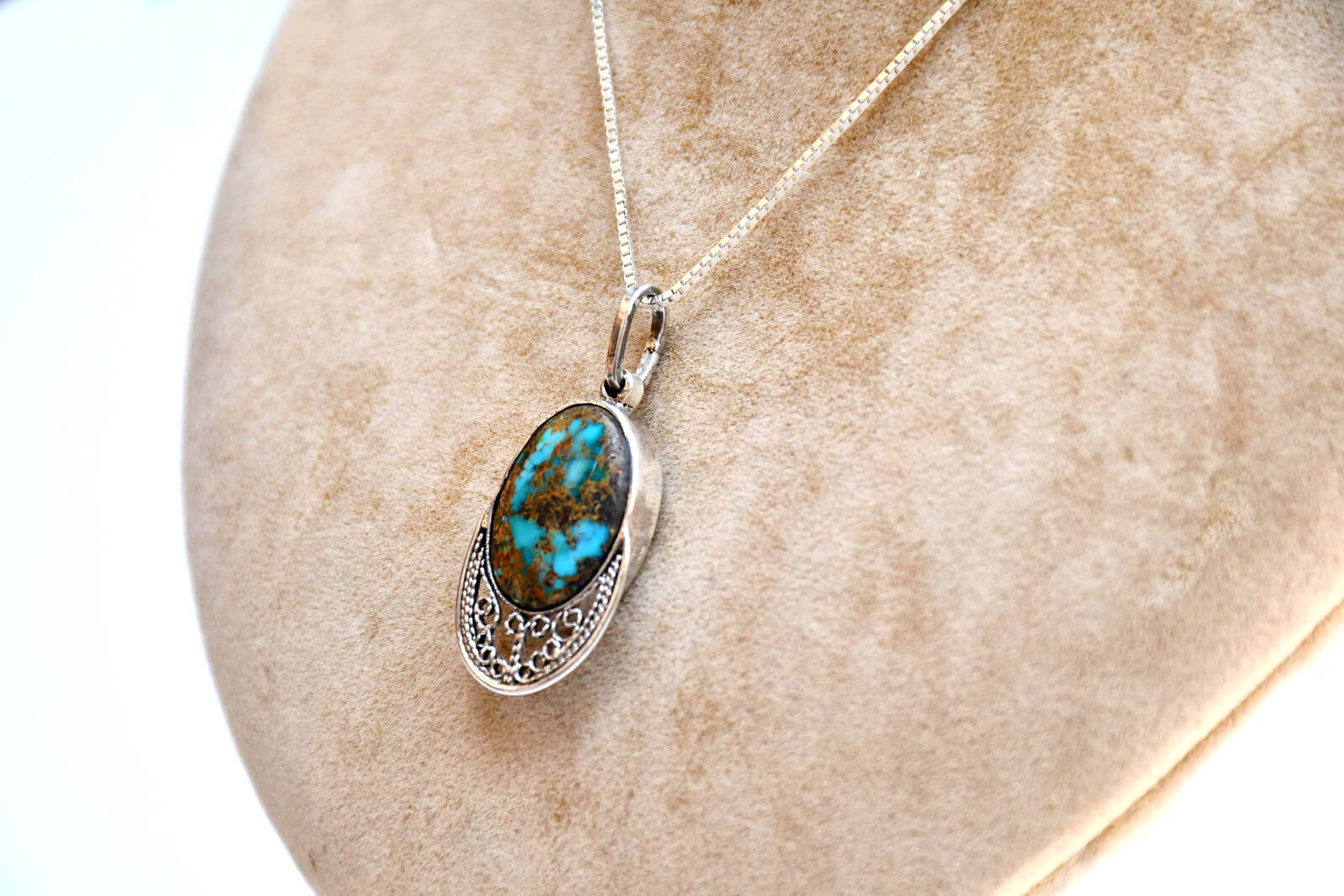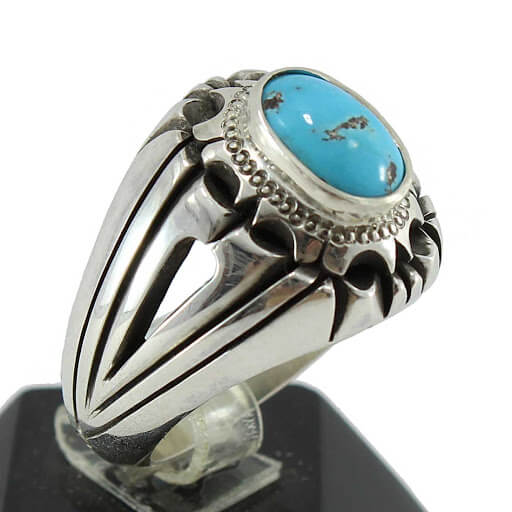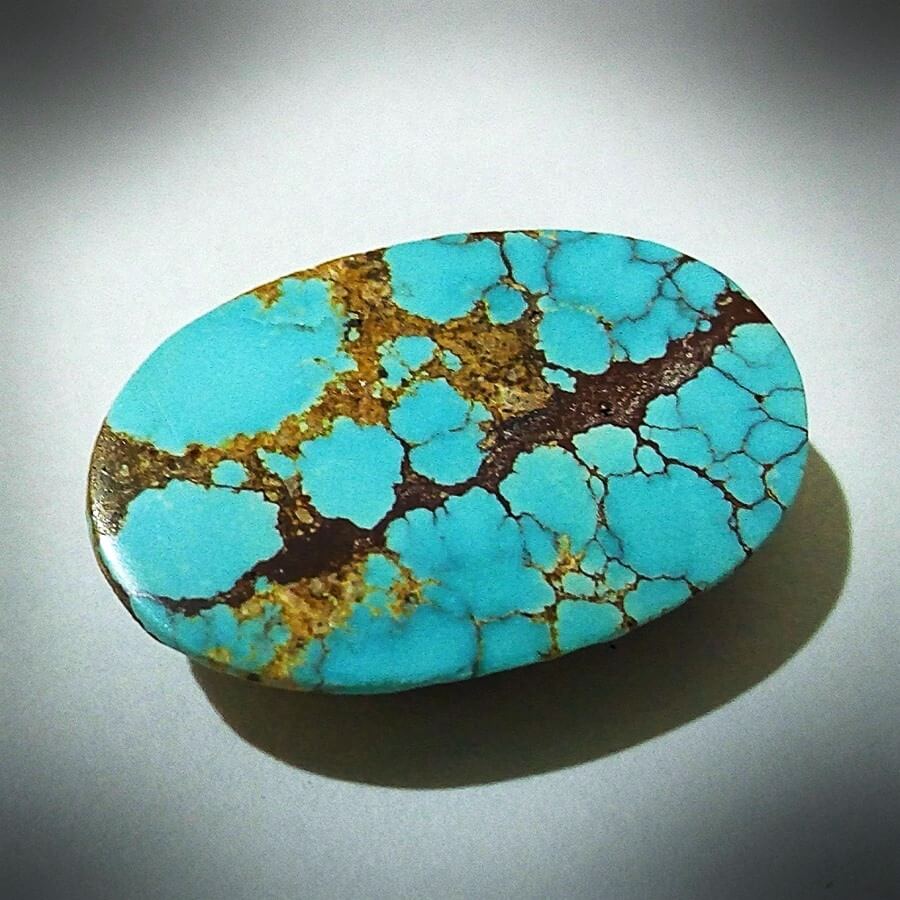Top 10 Iran Souvenirs
by Admin · October 22, 2020
What can I buy in Iran as a Souvenir?

You arrive in Iran and would love to spend some time shopping, be it for gifts or memorials of your Iran trip. These questions would come to your mind, and you might become confused; What can I buy in Iran? Persian handicrafts? Nuts? Spices? Sweets? Verily, what is Iran famous for? If you are looking for the best souvenirs from Iran and don’t want to pay tourist prices, don’t look further; here is our guide about the top 10 Iran souvenirs.
As Iran is a vast country with different cultures and ethnic groups, the things to buy in Iran are endless and differ from city to city. However, you can also find the Persian artisanal handicrafts from Iranian gift shops all over the country; You will find it all here in abundance. However, as budget and time are important factors, you’d better benefit from some local knowledge about the best Iran souvenirs and their prices and save yourself a lot of effort. Hence, read this guide on Iranian souvenirs and steer yourself in the right direction.
Enjoy your gift shopping in Iran; there is no lack of choice.
Best Iran souvenirs, their prices, and the best places to buy
In the table below, you can find the top Iran souvenirs, the best places to buy them, and their prices to avoid tourist prices. For more information about these Iranian souvenirs or buying other souvenirs from Iran, please contact us.
Persian Rug, A Garden under Your Feet
Iran is famous for its handmade carpets, and Persian rugs are known worldwide for their high quality and unique designs.
Iranian rug has a higher color variety than other countries, and its yarn has the best quality. Besides, the Persian carpet is an outstanding work of art in which the colors look vivid and natural. Highly skilled Iranian carpet weavers produce this original hand-woven piece of art in different Iran regions in various styles.
As a result, we can say that handmade Persian carpets are the most valuable souvenirs in Iran. Iranian carpets come in different sizes and types, which provides a wide range of options for tourists who want to buy them as Iran souvenirs. However, Iranian handmade carpets are usually expensive due to the complex and rich designs that are difficult to weave. On the other hand, it is impossible to carry large rugs in a suitcase. As a result, tourists usually buy carpets or rugs that are too small to fit in their luggage easily.
Besides, if you do not want to spend a lot of money to buy Iranian handmade carpets, you can go for other Persian rugs such as kilim (Glim) and Gabbeh. Both are made of natural wool yarn by hand, and their colors are natural plant dye. Unlike Persian carpets, kilim and Gabbe do not come from specific designs and are the product of weaving artists’ minds, making them unique.
You can find Iranian carpets everywhere in Iran. However, Tabriz, Turkman, Kashan, Kerman, and Nain’s Persian rugs, while the Gilims of Bakhtiari and Fars tribes are of higher quality.
Finally, you can find Iranian rugs in Vakil Bazaar in Shiraz and the bazaars in Kashan, Isfahan, Tabriz, and Tehran.
How to Tell a Machine made carpet from a Persian handmade carpet
Iranian carpets are valuable when woven by hand, and machine-made carpets are just various and beautiful, with no artistic value. Therefore, one of the most common questions that most carpet buyers ask is: “How can we tell the difference between a handmade and machine-made rug?”
Although experts can notice whether the rug is handmade or machine-made, it is sometimes hard for ordinary people to distinguish between hand-woven and machine-made rugs.
Here are four ways to identify Persian hand-woven carpets from machine-made carpets, with a closer look at the details:
1- Look at the back of the carpet:
One of the best ways to tell the difference between a machine-made rug and a handmade rug is to look at the back of it. In hand-woven carpets, the knots are slightly uneven and not perfectly uniform; Some nodes may be larger, and some may be smaller. On the other hand, the backs of the machine-made carpets are usually smooth and even.
2- Look at the Carpet Fringes:
The fringes are sewn to the end of the machine-made carpet and are not part of the rug. But, the fringes in handmade rugs are warp threads and a part of the carpet foundation.
3- Look at the Carpet Serging (the edge of the carpet):
Carpet Serging in handmade rugs is weft strands wrapped together at the edge of the carpet. In handmade rugs, the edges are stitched by hand, so they may not be perfectly straight. In contrast, the borders in machine-made carpets are sewn by machine and are usually uniform and smooth.
4- Look at the size, pattern, and design of the carpet:
The shape, size, and patterns of the machine-made rug are very symmetrical, and there is rarely any contradiction in its design. On the other hand, there may not be a precise symmetry in handmade carpets.
Identifying the High-Quality Handmade Carpet
So far, you have learned how to distinguish handmade carpets from machine-made ones. But the next question is, “How do I identify the high-quality handmade carpet?” In the following, we will introduce solutions to determine the quality of handmade carpets.
Check the Carpet Colors
Please pay attention to the color symmetry in the carpet’s symmetrical parts and check it in natural light. Of course, keep in mind that the handmade rug’s color looks darker in the direction of its weaving. Also, the color of the carpet should be uniform throughout the surface.
Tip: By rubbing a damp cloth on parts of the rug, you can tell that the carpet colors are consistent.
Check the Carpet Design and Size
To buy a handmade Persian carpet, you must pay attention to its size. A few centimeters of asymmetry and differences in the carpet’s dimensions in the upper and lower parts are normal. But the difference in the size of more than 3 cm, especially in small rugs, is a defect of the carpet.
Besides, make sure that the design shapes are not left unfinished. In other words, each line and design should have its natural shape and extension and not suddenly cut off or disappear in the middle of the design.
Check the Quality of the Carpet Villi (Pile)
Carpet villi should be durable, shiny, and flexible. Carpets with soft lint are less lasting than carpets with thick lint. Besides, you can rub the villi by hand; the height of the villi should be the same size in all parts. If the rug has been darned, the mended parts are usually rougher, and you can see the signs of needling in them.
Check behind the Carpet for Density and Uniformity of Design
The most crucial factor to consider when buying a handmade Persian rug is its texture. To identify the quality of the texture, it is better to check the back of the carpet. By looking at the back of the carpet, you can see and compare the knots’ density and the design’s uniformity. Moreover, parts with a rough, rotten, or scratched texture can be better identified from behind the carpet.
Persian Minakari, the Sky in Your Hand
Enameling, or Minkari in Persian, is an art that includes delicate paintings on metal utensils. This art has an antiquity of more than 5,000 years. According to studies on Byzantine pottery and Iranian works, Minakari is originated in Iran and then spread to other countries. Enamel (Mina) has brilliant colors obtained from a combination of metal oxides and several salt types. Although minakari has been done on different metals like gold and silver, today, enamel-work is mostly done on copper.
Isfahan is the center of Persian Minakari, which has an exceptional reputation in the world. In this city, eminent masters are engaged in enameling and create unique works. Accordingly, they create different works, that the most common of which are:
Plates, vases, bowls and cups, photo frames, enamel paintings, etc.; in which we see the combination of enameling with other arts such as Khatamkari, gilding, inlay, miniature, jewelry-making. In addition to Isfahan, you can find enamel-works in the traditional markets of other cities in Iran.
Detection of a High-quality Minakari
As mentioned, the enamel-work is produced on metals such as copper in various sizes. So you can buy small enameled utensils as a souvenir of Iran that is easy to carry in a suitcase as well. Now how can you identify high-quality Minakari?
Distinguish High-quality Persian Enameling from Material and Appearance
The most common metal used in Mina is usually copper, and quality copper weighs more. So the easiest way to recognize good Minakari is to hold the product in your hand and weigh it. If it is light, its copper is of lower quality.
Next, touch the surface of Mina. If it is perfectly smooth and shiny, this enamel-work is good. Besides, it shouldn’t have cracks, paleness, bubbles, holes, etc.
Moreover, the back of the work should also have high quality glaze without any scratches or cracks. Note the edges of the enamel-work, which should be without a sharp and winning part.
Distinguish High-quality Minakari from Colors and Patterns
The Iranian masters use traditional enameling motifs and symmetrical Islamic patterns. The elegance of the design and the wide variety of colors increase the value of the work. Also, the use of particular colors, such as red or purple subsets, increases the price.
The thickness of the color in painting and decorating enamel is uniform, and its colors should not be combined at the border of the designs. The maps should be clean and neatly executed.
Recognition of High-quality Minakari from its Identity Card
To identify high-quality enamel, look for its identity card; Description of the product, manufacturer, and warranty. It should have a code of original and high-quality enameling, the artist’s name, and the date and place of construction.
Persian Khatamkari, Thousands of Arts in One Art
Khatamkari or Marquetry is one of the Persian arts wherein a wooden or metallic object’s surface is decorated with pieces of colorful wood, bone, and metal. And the final handicraft is called Khatam.
In this Khatam Kari, materials are usually gold, silver, aluminum, brass, bone, ivory, etc.
Many objects can be decorated with Khatam, such as jewelry boxes, frames, chessboards, musical instruments, desks, etc. One of the most famous handicrafts that many tourists buy as Iranian souvenir is the Khatam box which is cute, small, and light.
Khatamkari, with more than 700-year antiquity, is among Iran’s artistic heritage. This Persian art is still practiced in Shiraz, Isfahan, and Tehran. So you can buy Khatam handicrafts as Iranian souvenirs in the vakil Bazaar of Shiraz, Qeysarieh Bazaar of Isfahan, and Tehran Grand Bazaar. Notably, the Shirazi Khatam is more complicated and beautiful and, as a result, more expensive than Isfahani Khatam.
How to Recognize a High-quality Persian Khatam
First of all, please note that Khatamkari is hard; hundreds of pieces of metal, bone, ivory, and wood are laid side by side on a small surface. Hence, the smaller pieces result in a higher price of this handicraft. However, there are many low-quality Khatmakari in the market, and it is not easy to tell them from the original ones. Here, we offer some points for recognizing a high-quality Khatam Kari.
Pay Attention to the Patterns and Designs
First of all, the smaller and more delicate the patterns and triangles, the higher the quality and value of the Khatamkari product. Accordingly, flowers made with small polygons, complicated and non-repetitive designs with many details and the variety of consumables are each a criterion that increases the price of this Iranian handicraft. So, please note that the original Khatam has a high price.
Besides, the designs of a Khatamkari piece of art should be symmetrical. Note that the patterns in the corners and sides of the inlay should be perfectly symmetrical and equal. Besides, the color intensity should be the same in all parts of the po¡roduct.
Generally, a vital point to consider when buying Persian Khatam is that the surface of the Khatamkari should be smooth, with no empty space or scratches.
Pay Attention to the Khatam Varnish
One of the steps that takes place during the production of an Iranian Khatamkari is varnishing. Accordingly, varnish should cover all surfaces of the product. Notably, if a part is without varnish, moisture, air, and dust will penetrate it and cause the product to rot. Also, you should not observe repairs and putties on the work surface.
Finally, you need to be very careful in this handicraft’s maintenance. Therefore, be careful when moving this valuable Iranian souvenir, not hit it or scratch its surface. Also, use a slightly damp cloth to clean it.
Persian Handmade Cloths, the Performance of the colors
Depending on the city you visit in Iran, you can buy different handmade cloths special to that region. The quality, weaving style, and instruments of Iranian hand-woven fabrics vary from city to city.
Accordingly, in Isfahan, you can find Ghalamkari, the traditional textile printing in which floral and geometric patterns that are pressed onto cotton cloths. In Kerman, you can buy Pateh, an astonishing, naturally dyed, hand-woven cloth made of wool.
Actually, they are very precious because all are handmade. Finally, the remarkable advantage of Persian handmade fabrics compared with other Iran souvenirs is that you can find a diversity of them in all Iran cities. Besides, they are non-fragile, light, and easy to carry in the suitcase. Here, we have listed the most famous Iranian handmade cloth.
Persian Termeh
Termeh is an exquisite traditional fabric made of wool and silk and sometimes threads of gold. This Persian handicraft is indigenous to Yazd, and Termeh weaving probably dates back to the Safavid era.
Iranians manufacture Termeh in various forms, such as tablecloths, purses, wallets, fancy shoes, jewelry boxes, etc. So, you have a lot of options to buy Termeh products as Iran souvenirs. Although Yazd is the main center of producing Termeh, it is also manufactured in Isfahan.
How to Recognize the Original Iranian Termeh
Termeh, like any other fabric, might be original or fake. Also, Yazd original Termeh is sold as first or second-grade Termeh, which is not easy to recognize by an ordinary person. SO, if you want to buy Termeh as an Iran souvenir, pay attention to the below tips.
First of all, the original hand-woven Termeh is very expensive, and the high-quality silk Termeh is very soft, delicate with eye-catching natural colors. Besides, there is a woolen Termeh, which is rougher and cheaper. Of course, you can not identify original Termeh woven from silk and wool by touching the fabric.
Moreover, to distinguish the original silk Termeh, you can burn a fabric’s thread. If the silk is genuine, it burns very slowly and becomes powder and smells like burning hair. On the contrary, artificial yarn burns like plastic and smells like burning paper.
Finally, to identify the original Termeh, you must pay attention to its texture and designs. The higher the density and the more delicate the textures, the better the quality of the Termeh.
Persian Ghalamkari (Kalamkari)
Ghalamkari is the traditional art of painting cotton or silken fabric with geometric patterns. This art is indigenous to the city of Isfahan. To produce this Persian handicraft, the artists print geometric, floral, and arabesque patterns with a wooden stamp on the fabric. Then, they make tablecloths, purses, clothes, wallets, etc. using these pieces of cloth. This souvenir is light, diverse, and mostly cheap. You can buy Ghalamkar cloths, as Iran souvenirs, in the old bazaars of Isfahan, Shiraz, Tehran, Kashan, Tabriz, etc.
Finally, Iranians use Ghalamkar fabric as the table cloth.
How to Identify a High-quality Iranian Ghalamkari
Please note that Qalamkar cloth is an Iranian souvenir that is almost cheaper than other Iranian handicrafts. However, in addition to the price, you’d better pay attention to the following items to buy this Persian souvenir.
The material of the high-quality Ghalamkar fabric is cotton or silk. Because the colors sit better on cotton or silk, the patterns are created flawlessly.
Moreover, in high-quality Qalamkar fabric, natural colors should be used because natural colors are more beautiful and durable.
The Qalamkar cloth should have a variety of colors that show the artistic creativity in the product. It is noteworthy that the more colors in the fabric, the more stamps are used, and more people are involved in the work.
Persian Pateh
Pateh is a unique and delicate type of Persian needlework that is a souvenir of Kerman. It is a naturally dyed, hand-woven decorative woolen fabric. This art dates back to the Safavid era and is mostly done on thick fabrics by Kermani women. To produce Pateh, the artists sew flourishes of paisley patterns with colorful and elegant woolen threads. Moreover, the popular designs of this Persian handicraft include the cypress tree and Toranj.
The artists produce tablecloth, the Quran’s cover, prayer mat, curtain, coaster, etc. using Pateh. You can buy Pateh as a precious Iran souvenir in the Old Bazaar of Kerman.
How to Identify a High-quality Iranian Pateh
A high-quality Pateh is a Pateh whose fabric and yarn are made of 100% wool and are dyed using natural materials. Besides, the denser the stitches, the better the Pateh. Moreover, the thinner the fabric and the more delicate it is, the higher the quality. Of course, Iranian wool is rough at first, but over time, it becomes soft.
Note that the threads sewn with thin threads have denser stitches and are more expensive.
Finally, the color of a high-quality Pateh fabric made of Iranian wool should be milky.
Persian Pottery and Ceramics, the Identity of a Nation
Did you know that the World Pottery Capital is in Iran?
As soon as you visit the Iran museums, you will realize the antiquity (before the Persian Empire) and the importance of pottery in Iran. And that is when you become interested in getting Persian pottery as a souvenir of Iran. The good news is you can buy this beautiful Persian handicraft in most of Iran destinations. However, the towns of Lalejin in Hamedan, Natanz in Isfahan, and Meybod in Yazd are the centers of producing Iranian pottery and ceramics. So, they are the best places to buy this lovely Persian handicraft.
Notably, Lalejin in Hamadan province, Iran, has been inscribed as the World Pottery Capital by UNESCO’s World Crafts Council. Hence, you can find the most beautiful Persian potteries and ceramics in Lalejin city.
Moreover, decorative painted potteries and ceramics such as small jars, bowls, mugs, or objects with the Persian forms like pomegranates, horses, and birds are good choices to buy as Iran souvenirs.
Finally, you can find a beautiful Persian handicraft that is Minakari on pottery in Iran that can be a unique Iranian handicraft.
How to Identify High-quality Iranian Pottery and Ceramic
If you are eager to buy Persian pottery and ceramic products as Iran souvenirs, please note the following points:
- Pottery or ceramic must have balance, symmetry, and delicacy.
- The product should have no roughness, puffiness, cracks in the inner and outer sides.
- The presence of glaze pallor, burns, non-uniformity, or parts without glaze reduces products’ quality.
- If there are designs and patterns on the products, the motifs should be traditional. Furthermore, they should be inspired by the culture of their region. Besides, the designs should be painted by hand. To ensure that the product is handmade, you can buy Iranian pottery from pottery workshops.
- Finally, pottery or ceramic, whose glaze makes it look like a wooden or leather product, is not considered a valuable Iranian handicraft.
Persian Miniature, the Most Delicate Paintings in the World
The miniature is the art of drawing pictures with a lot of tiny details. It is a worldwide art that was used to decorate ancient manuscripts. Hence, you can find diverse kinds of miniature worldwide, but each country has its style.
In Iran, in the Safavid palaces such as Ali Qapu, Chehel Sotoun, and Hasht Behesht in Isfahan and even the Fin Garden in Kashan, you see marvelous miniature paintings. Also, today, some artists do miniature as a type of painting.
Interestingly, this artwork is so delicate that you may need to use a magnifier to see its details. Accordingly, each miniature artwork’s price varies depending on its theme, size, and artist’s skill to create delicate details.
Moreover, there are some shops all around Iran which sell Miniatures of the new artists or the copy versions of magnificent paintings by famous Iranian miniature painters such as Mahmoud Farshchian and Hossein Behzad. So, the miniature is one of the Iran souvenirs you can buy from every Iran city. However, the best city where you can find miniature shops in Isfahan.
Finally, you can find miniature as a painting board or mixed with other handicrafts, like Khatam.
How to Recognize a Valuable Persian Miniature
The most prominent feature of an Iranian Miniature is its size and details. Accordingly, Persian Miniature has small designs with a lot of details. And, the artist creates rich and complex scenes with a tiny brush. Interestingly, creating a very exquisite Persian Miniature may take a year.
Moreover, Persian Miniatures can be distinguished by their natural and realistic motifs. Also, Iranian miniature artists are famous for their moderate and delicate use of color.
Persian Giveh, Iranian Traditional Shoes
Giveh is a type of shoe with a hand-woven upper made of cotton or silk yarn and leather, rubber, or compressed fabrics. This traditional Iranian footwear was once widely used, especially in summer. Giveh-Weaving is one of Iran souvenirs made in Qazvin, Fars, Kermanshah, and Yazd provinces. The artist weaves Giveh with a needle and a strong cotton thread in one piece like a sock. It takes about two days to weave a Giveh with a yarn of medium thickness. Sometimes, in some areas, the artists weave beautiful geometric patterns on Giveh. Moreover, it is common to use white cotton yarn and black or white silk yarn in producing this Persian handicraft.
Unfortunately, in recent years, due to the prevalence of leather and non-leather shoes, the production of Giveh in most parts of Iran has lost its long-standing prosperity and credibility. But some Iranian artists have tried to persuade young people to use these valuable Iranian handicrafts by changing the appearance of this footwear. So today, you can buy Giveh in traditional and modern designs as Iranian souvenirs from Iran bazaars.
How to recognize a quality handmade Giveh
Some tourists buy Giveh as footwear while some buy it as a decorative item. In both cases, the value of this Iranian souvenir is due to being hand-woven. In other words, traditional Giveh has woven cotton or silk upper. These kinds of footwear are also very suitable for wearing. On the other hand, there are pairs of Giveh that are not woven by hand and are made of tarpaulin; They should be cheaper.
Furthermore, high-quality Giveh’s soles are made of felt or leather. So, Giveh with plastic insoles is of lower quality. When buying Giveh as shoes, pay attention to the inside of the insole; It should be soft and comfortable.
Yummy Iran Souvenirs
If you are a gourmet or have gutty friends back home, nowhere is better than Iran to buy yummy souvenirs. Because Iranians are food lovers and good at preparing delicious dishes. Also, each city of Iran has its food products, including pastries, spices, nuts, etc. Hence, most tourists are interested in buying famous Persian sweets, nuts, etc. as Iran souvenirs. Here, we have listed the most famous yummy Iran souvenirs.
Iranian Nuts
Did you know that Iran is the biggest producer of pistachios in the world?
As Iran is the pistachio market leader, you can buy the best quality pistachio in our country. At the same time, its price is lower in comparison to other countries in the world. Moreover, the center of producing pistachio in Iran is the city of Rafsenjan in Kerman Provence. Notably, “Akbari”, “Kale Qoochi” and “Ahmad Aqai” pistachios are the most famous and expensive of all. Moreover, Iranian use pistachios in different sweets such as Gaz and Sohan. Either they are roasted in lemon juice and salt or used in the pastries; you will enjoy them.
Besides, among the diverse kinds of Persian nuts, pistachios are not the only thing you can buy from Iran. You can also purchase other Persian nuts, including walnuts, almonds, melon seeds, peanuts, etc. as Iran souvenirs. You can buy different kinds of dried fruits and nuts from Iran as a delicious Persian souvenir.
As mentioned before, nuts are not expensive in Iran. Accordingly, the high quality dried pistachio price per kilo in Iran is about 10 euro.
Persian Sweets
Persian sweets are very famous among tourists who are interested in food tourism. Accordingly, by traveling to Iran’s cities, you can enjoy their native delicious sweets and pastries.
The best Iranian sweets are Gaz from Isfahan, Qottab, Pshamak, and Baghlava from Yazd, Sohan from Qom, Masghati from Shiraz, Reshte Khoshkar from Rasht, Qorabiyeh from Tabriz, Kolompeh form Kerman, etc.
Persian Spices (Advieh)
You are in an Iranian restaurant and put a piece of food in your mouth, then a lot of flavor and aroma explodes in your mouth. When you taste Persian spices’ miracle in the foods, you decide to take some of these seasonings home as a souvenir from Iran.
Fortunately, you will find diverse kinds of spices and seasonings in Iran bazaars and the pre-packaged form in grocery stores. The most popular spices you can find in Persian food include Saffron, Cardamom, Turmeric, Cinnamon, Cumin, Sumac, etc.
Notably, the most famous and expensive Persian spice is saffron, the red gold of Iran. And since Iran is the biggest producer and exporter of saffron and the saffron price in Iran is lower than in other countries, many tourists want to buy Persian saffron as Iran souvenir. However, the maximum amount of Persian saffron allowed to exit from Iran is 100 grams per passport. Finally, please check out our blog about Iranian saffron for more information about saffron and spot the fake saffron from the real one, please check out our blog about Iranian saffron.
Iranian Ghalamzani, Marvelous Persian Metalworks
When you walk in the traditional bazaars of Iran, you will hear the sound of continuous beating in the bazaar corner. This is the sound of hammers and bars using in metal engraving. The art of engraving is one of the traditional arts of Iran that can be classified as metalworking. Besides, this art has three styles called Isfahani style, Shirazi Style, and Tabrizi Style. Generally, Ghalamzani is common, mostly in Isfahan, Shiraz, Tabriz, Kerman, and Kermanshah, each with its style. Therefore, during your trip to different Iran cities, you will have the opportunity to see these artists and their handicrafts. Ghalamzani is carving delicate patterns and lines using hammers and steel bars on the surface of metals such as gold, silver, copper, brass, etc.
Meanwhile, due to its softness and ductility, copper is more popular than other metals. Besides, more Ghalamzani is done on dishes such as pots and large plates. So, as an Iran souvenir, you can take home a small piece of this art.
How to identify high-quality Persian handmade Ghalamzani
If you want to get Ghalamzani handicrafts as Iran souvenirs, check out how to recognize a high-quality handicraft below.
Distinguish quality Glamzani of its material
In the Iran bazaars and handmade Ghalamzani, some metalworks have been pressed using the machine. One way to identify engraving by hand is by the thickness of the work. Accordingly, the machine-made work is light because it cannot engrave on a thick sheet of brass or copper. On the contrary, handmade Ghalamzani crafts are thick and heavy. Obviously, machine-made works are much cheaper than handicrafts. Also, silver is more expensive than brass and brass than copper.
Recognize High-Quality Ghalamzani of its designs
Hand metalworks are not entirely regular and uniform, and sometimes skewed lines are seen in their designs. But the work with the machine is quite regular with no skew in its designs. On the other hand, the motifs used in Persian Ghalamzani are traditional, and the more delicate the design, the more valuable it is. Among these desinges, human and face motifs are more expensive.
Distinguish quality Ghalamzani of its appearance
You should not observe any hole or trace of bitumen on the surface of Galamzani. Besides, the plating must be uniform, and the work should have been paid very carefully. Moreover, the Ghalamzani tray or plate must be perfectly flat when you put it on the ground.
Persian Turquoise, An Enchanting Blue Stone from Neyshabur
If you walk in Iran’s traditional markets, you will see beautiful precious and semi-precious stones. Among all Persian semi-precious stones, turquoise has a special place in Iranian culture.
It is one of the most valuable decorative stones found only in certain parts of the world, including Iran. Also, the turquoise color was derived from the color of this stone, which was very expensive. Also, turquoise color is abundant in the decorations of Iranian mosques and palaces. Besides, in ancient Iranian culture, turquoise had healing and protection properties.
One of the most popular and high-quality turquoises globally is Neyshabur turquoise, which is used in ornaments and decorative utensils.
You can buy Persian turquoise as a precious Iran souvenir. Accordingly, you can find the jewelry with Persian turquoise or buy raw stones and ask the craftsmen to make the jewelry for you. So if you are looking for uncut Persian turquoise stones, you can buy them from turquoise stone shops in Neyshabur or Mashhad. But, if you are looking for cut stones, you can find them in reputable turquoise shops all over Iran.
Besides, turquoise is used in works of art such as carving. Accordingly, Firoozeh Koobi is one of the Iranian handicrafts, which includes placing small pieces of turquoise stones in a mosaic shape on the surface of dishes, ornaments, and decorative objects (from bases made of copper, brass, silver, or bronze). In this Persian handicraft, a kind of dark lacquer is placed between the pieces of turquoise. The more elaborate and regular the turquoise dish and the shorter the distance between the turquoise pieces, the greater its artistic value is.
How to identify the original Persian turquoise
Recognizing original and high-quality turquoise is a challenging task, even for professionals. But here are some ways to identify the authentic turquoise.
Identify Original Turquoise from its Identity Card
As mentioned above, Neyshabur turquoise is one of the most expensive turquoises in the world. Unfortunately, sometimes in the turquoise market, the turquoise of Kerman or Damghan is sold instead of Neyshabur turquoise. Therefore, when buying turquoise, ask the seller for the stone’s original identity card that shows it is from Neyshabur.
Distinguish the Originality of Turquoise from its Color
The color of the original turquoise stone is blue, and due to the presence of metals such as copper and iron, its color range is from pale blue to greenish-blue or yellowish-green. Also, the original turquoise color is usually slightly opaque. This gem with black streaks is called “Spiderweb Turquoise.” And when the lines are golden, the turquoise is much more valuable. However, light blue turquoise stones are less valuable. In other words, high-quality turquoise has a sky blue color. Furthermore, the original Neyshabur turquoise stone has black spots and streaks on the back of the jewel.
In a type of fake turquoise, broken or powdered turquoise is pressed and mixed with glass, ceramic, and plastic. The color of this fake turquoise looks artificial and very uniform.
To distinguish Iranian turquoise from Tibetan or American one, you should pay attention to the dark and rough veins in Persian turquoise.
Distinguish the originality of turquoise from its material
Counterfeit turquoise is made of painted compressed plastic. So, to identify the original turquoise, draw a needle on the turquoise. If a deep line falls on the turquoise, the turquoise is fake. The original turquoise stone not only does not get scratched even can create scratches on the glass.
Like this article?
Subscribe To Our Newsletter
Get updated articles about Iran trip






